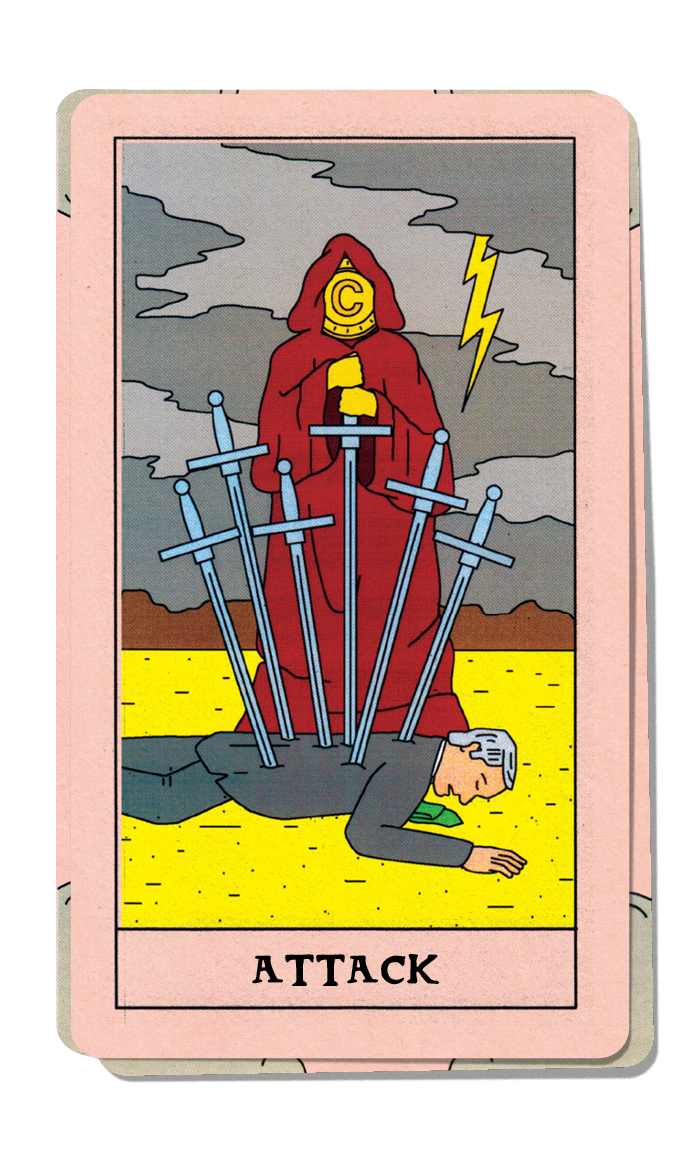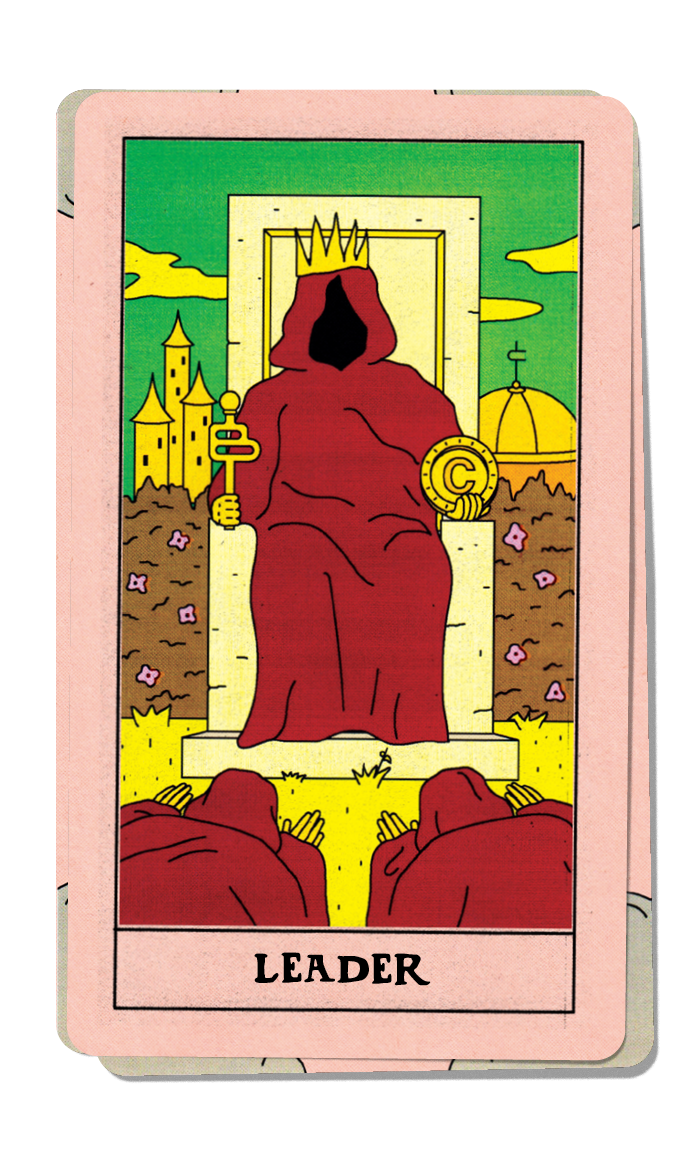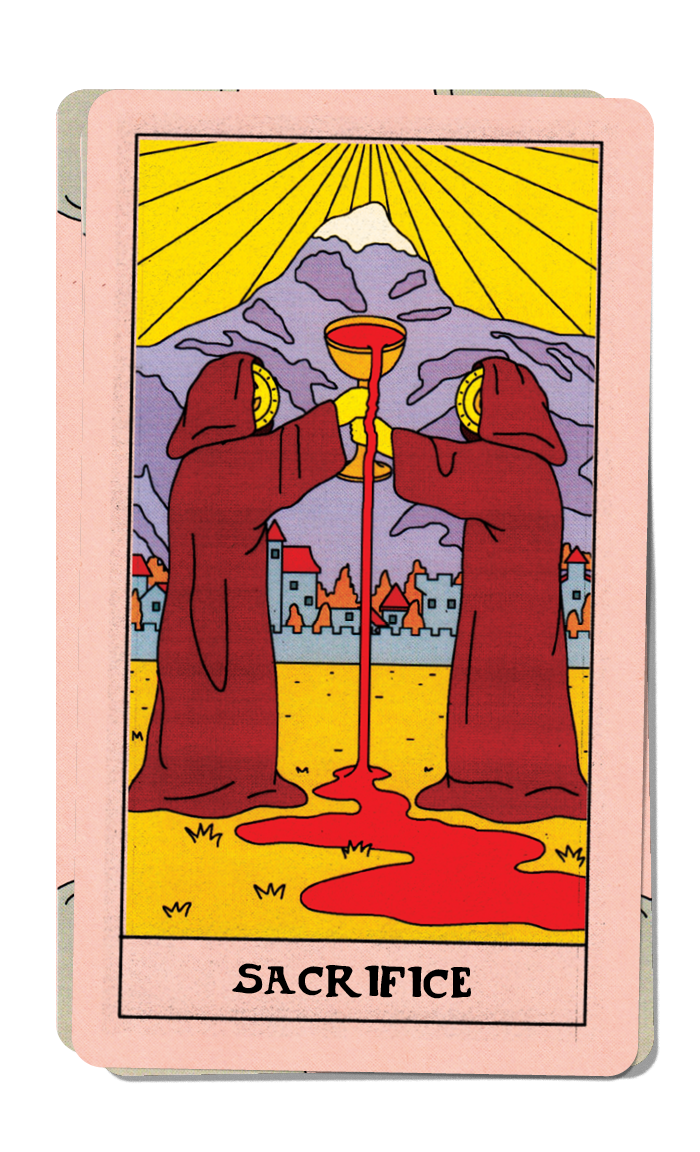Chris DeRose was noodling away on the internet when he stumbled over an intriguing post on Slashdot, a forum for extremely online hyper-geeks like himself.
“How’s this for a disruptive technology,” a user wrote on July 11 2010, enthusiastically describing a decentralised, peer-to-peer digital currency with no central bank, no transaction fees and beyond the reach of any government. Using computers to solve cryptographic puzzles would earn people “bitcoins”.
DeRose was intrigued yet unconvinced by the concept. The young Floridian programmer struggled to see what utility it might serve. Many others on the forum were also sceptical. “Hey thanks for trying to post something all edgy or controversial or whatever the hell you think it is,” one replied.
All this changed with the rise of Silk Road. The “dark web” marketplace, launched in 2011, convinced DeRose of bitcoin’s potential. Finally, the cryptocurrency had found its “killer app” and could become real digital money. And his fascination took flight. Regular board game nights with friends morphed into bitcoin nights at the local pub.
By 2013, DeRose, then aged 31, ditched his successful computer consulting business and threw himself wholeheartedly into the mushrooming cryptocurrency world, becoming a popular if controversial podcast host.
The protean crypto subculture welcomed debate and criticism, DeRose told the FT last month. Although it had a mysterious creator-messiah in whoever was hiding behind the moniker “Satoshi Nakamoto”, it was an open-to-all-comers, intellectually stimulating online brawl between everyone from hardcore libertarians and bank-hating leftwingers to dedicated “cypherpunks”, a group of privacy-obsessed cryptographers and coders that had coalesced in the 1980s.
DeRose loved it. “The difficulty of the technology in those days filtered out the technically inept,” he recalls, “and this increased the ability to comprehend nuance and cultivate the constructive value of scepticism.” But then things started to change.
In 2015 soaring interest triggered an explosion of new digital currencies of variable quality. Scams proliferated. The debate began to Balkanise. By 2017 — when the price of bitcoin took off like a rocket, going from under $1,000 per “coin” to almost $20,000 — early discussion had calcified into rigid dogma that bore little relation to reality. Bitcoin and its zealots were the strongest example of this, DeRose felt.
“If you look online at ‘what is bitcoin’, what you’ll see is a gigantic amount of literature and decontextualised media snippets that paint a beautiful picture of the imminent success and domination that is surely awaiting us,” he says.
“However, if you look at bitcoin off the screen, what you’ll see is declining merchant uptake, zero evidence of blockchain deployment or efficiency, and mostly just a lot of promotional events offering cures to whatever ails you.”
DeRose is not alone in his disillusionment. Cryptocurrency has over the past decade become a broad movement with its own language and symbols, driven by a constellation of prophets with varied but overlapping gospels, who treat both external and internal dissent as blasphemy and promise adherents that they form the intellectual vanguard to a bright new future. Sound familiar?
The definition of a cult isn’t cut and dry. Scholars, civil society groups and anti-cult counsellors offer varying and at times contradictory criteria, and the line between cult activity and mainstream religion can be vanishingly thin.
Most groups identified as cults feature a single charismatic leader, something that the crypto world lacks. But many other classic hallmarks of culthood — apocalypticism, the promise of utopia for worthy believers, shunning of external critics and vitriolic denouncement of heretical insiders — are increasingly dominant.
“Crypto is essentially an economic cult that taps into very base human instincts of fear, greed and tribalism, combined with economic illiteracy as a means to recruit more greater fools to pile money into what looks like a weird, novel digital variant of a pyramid scheme,” argues Stephen Diehl, a crypto-sceptic software engineer. “Although, it’s all very strange because it’s truly difficult to see where the self-aware scams, true believers and performance art begin and end. Crypto is a bizarre synthesis of all three.”
Given the global financial system’s growing exposure to digital currencies, the culture around crypto, how much or little it changes, could have major consequences for retail investors, central banks and the environment.
Crypto’s most ardent proponents predict it will eradicate inequality, wipe out corruption and create untold wealth. Most cults make similarly expansive promises. And as the gulf between promise and reality grows, things get dark.
The cryptocurrency movement can be unforgiving of apostasy, so “Neil” asked the FT not to use his real name. Fascinated by the idea of “programmable money”, Neil joined an upstart cryptocurrency exchange called Coinbase in 2014 immediately after finishing a degree in software engineering. He found the heady narrative of a revolutionary resetting of the financial order intoxicating and immersed himself in the “crypto-anarchist” scene of San Francisco.
In the cultural imagination from which cryptocurrencies were spawned, the 2008 financial crisis loomed large, a casus belli for war against the old order to build a better alternative. The swift success of crypto appeared to affirm the mission’s importance and resonance for many young technologists like Neil.
Coinbase is now one of the industry’s biggest trading venues, and earlier this year listed its shares at a $76bn valuation — more than the Nasdaq or the New York Stock Exchange owner ICE. “I went from thinking, ‘Oh, cool, I can program money’ to thinking I was part of a movement, a revolution founded on this technology,” Neil recalls.
But he quickly became disenchanted. Heretical podcasts like DeRose’s fed his nascent cynicism. Many new cryptocurrencies appeared pointless. Even the promise of bitcoin itself started to lose its lustre on closer inspection of its economic, social and technological merits.
Today, Neil says the cryptocurrency movement is actively harmful to its members and the environment. “I think nerdy types like me got fooled because bitcoin made us feel cool, like a Revenge of the Nerds type thing, so we were incentivised to not ask ourselves hard questions. And then, the non-technical people got fooled because they didn’t understand the technology,” he says. “So, it created a powerful pair of blinders.”
The idea that cryptocurrencies are a cult, though not a new criticism, may seem unfairly pejorative to what is now a $2tn market with tentacles reaching around the world and across industries. Like many new technologies in human history, crypto has attracted genuine investors and utopian ideologues, technocratic dabblers and bored punters, scam artists and sharks. Nor is the crypto world a homogenous blob. It boasts myriad distinct tribes and schools of thought.
It has also become undeniably more mainstream. Staid finance industry stalwarts such as Fidelity and Mastercard have embraced digital assets. S&P Dow Jones Indices now produces cryptocurrency benchmarks alongside venerable gauges like the Dow Jones Industrial Average. Currencies named after memes are regular segments on CNBC. Many pedigreed venture capitalists are convinced that the digital asset industry will prove revolutionary. El Salvador has even adopted it as an official currency.
Using survey data gathered by the Federal Reserve Bank of Atlanta, the Bank for International Settlement — a kind of central bank for central banks — found that cryptocurrency investors were actually no more concerned by the state of the financial system than the populace at large.
For many of those dabbling in cryptocurrencies, the goal is simply to get rich, not to build a new world order. “When Lambo?” is a common phrase on crypto forums, with members wondering when they’ll be rich enough to buy a Lamborghini. In practice it can be tricky to disentangle crypto belief from crypto greed.
Perhaps the biggest difference to traditional cults is the lack of a single leader figure. Even modern-day cults or sects, such as the purported multilevel marketing scheme-slash-sex cult NXIVM or Dera Sacha Sauda, led by Indian “godman” Gurmeet Ram Rahim Singh, need a strong, charismatic leader to both forge a group and to keep it moving.
Satoshi Nakamoto, the pseudonymous creator — or creators — of cryptocurrency is perhaps its most enduring mystery. In 2008, Nakamoto released the whitepaper “Bitcoin: A Peer-to-Peer Electronic Cash System”, and the first bitcoin was mined the following year. Then in 2011, they emailed developers saying that they had “moved on to other projects”, and have not been heard from for more than a decade.
Another major way in which crypto-cultism differs from traditional cults is the lack of physical gatherings. Beyond events such as Bitcoin Miami and “crypto cruises”, or scattered communities like El Salvador’s bitcoin beach, cryptocurrency advocates communicate online. “It’s a very different dynamic to creating a cult on a compound,” says Martin Walker, director for banking and finance at the Center for Evidence-Based Management. “It’s [also] quite hard even with traditional cults to distinguish between cultism and criminality.”
Though its lack of a single leading figure and its amorphous online footprint marks it out from traditional cults, some say the cryptocurrency movement bears a striking resemblance to another progeny of the digital age: the QAnon super-conspiracy.
“Both have doctrine passed down by a mysterious unknown founder, puzzle-solving, and internet meme culture and lots of predictions about politics/economics that are completely unfalsifiable,” says Diehl. “They’re both rooted in this ideology that claims to oppose a common enemy: corruption and untrustworthy intermediaries, and both see the internet as the way to finally eradicate those problems in some great apocalyptic event.”
Perhaps the most interesting comparison between the two is the role of a “priestly class” of influencers. Both QAnon and the crypto world are characterised by evangelists that understand and mediate their prophets’ truth through everything from tiny blogs to Telegram, TikTok and Twitter accounts with hundreds of thousands of followers.
Tesla chief executive Elon Musk was once the most obvious example. On May 9, he tweeted that his company SpaceX would launch a satellite to the moon next year funded by dogecoin, a seven-year-old joke cryptocurrency named after the Shiba Inu dog meme. He followed up two days later, asking his followers whether Tesla should accept dogecoin.
Yet, on May 12 Musk alienated many in the community when he announced he would bar consumers from using bitcoins to buy Tesla cars, citing energy consumption. Both crypto influencers and their flocks can be very fickle.
Cults don’t merely promise that the existing order is about to collapse. Key to their appeal — as with mainstream religions — is the promise that complete belief will be rewarded. The exact nature of those rewards has varied, though it has often been a spiritual gift of some sort, whether enlightenment and peace on earth. Others, such as Jim Jones’ Peoples Temple, mixed in political elements such as racial equality.
Crypto-cultism promises a social and financial revolution that will energise technological innovation, all the while rewarding the worthy with vast wealth. Many cults have offered such transformative promises, but few if any have posed such risks to retail investors, central banks and even the environment if they cannot live up to them.
“Most cults affect a few hundreds or thousand people,” says David Golumbia, a professor of English at Virginia Commonwealth University who has written extensively on cryptocurrencies. “This really is much more widespread and affects many more, which makes it much harder to find out how to resist it.”
To many cynics, elements of crypto-cultism feel more like an effort to put a veneer of religiosity over an otherwise starkly Mammonite enterprise. HODLing — meaning to hold on to cryptocurrencies no matter their falls — is a prime example of this. The term dates back to 2013, when a fateful misspelling of holding became elevated to a pseudo-philosophy. Those who cash out early, causing the price to fall, are weak. The act of buying digital assets, no matter how ludicrous in name or nature, is valorised.
For Jackson Palmer, one of the creators of dogecoin — the joke cryptocurrency that shot to prominence this year thanks to Musk — this has now morphed into something profoundly pernicious. “After years of studying it, I believe that cryptocurrency is an inherently rightwing, hyper-capitalistic technology built primarily to amplify the wealth of its proponents through a combination of tax avoidance, diminished regulatory oversight and artificially enforced scarcity,” Palmer wrote on Twitter this summer, announcing his permanent withdrawal from the industry.
“These days even the most modest critique of cryptocurrency will draw smears from the powerful figures in control of the industry and the ire of retail investors who they’ve sold the false promise of one day being a fellow billionaire,” he added. “Good-faith debate is near impossible.”
There is a well-established playbook on how to deal with criticism like this. Even crypto novices are likely familiar with the acronym FUD, for “fear, uncertainty and doubt”. Though the term pre-existed bitcoin, the cryptocurrency community has adopted it with gusto.
There are various kinds of FUD — they include China FUD, which emerged after regulatory crackdowns by the Chinese government on crypto-miners and exchanges; Tether FUD, surrounding the $66bn cryptocurrency which has faced years of questions over the nature of its reserves; and energy FUD, focused on the considerable electricity usage required to power mining. The sources of FUD include legacy media houses, “fiat shills” in the financial establishment, government agents, regulators and hopeless “no-coiners”.
It is easy enough to find examples of new religious movements who have resorted to questionable methods to deal with external enemies. Scientologists, LaRouchians and NXIVM have all attempted to smear, frame or hack critics.
In the crypto wars, one such victim is Jorge Stolfi, a professor of computer science at the State University of Campinas, who was targeted after he wrote a letter to the Securities and Exchange Commission opposing a proposed bitcoin fund by comparing it to shares in a Ponzi scheme. A fake account on Reddit purporting to be him started signing up to sadomasochist forums and publishing embarrassing material until Stolfi managed to convince administrators to close the account.
“I get all kinds of insults,” he says. “Every time I criticise cryptocurrencies, they tell me you are defending fiat because you are an employee of the government, you want to continue the scam of national currencies which are Ponzi schemes, you work for an entity which extorts money from people with guns.”
A more common way that crypto-cultists combat FUD is to simply refuse to engage with it, instead herding into echo chambers on YouTube, Clubhouse or WhatsApp messaging groups where only positive content can be found and discussed. “If you associate yourself with FUD (even just reading them), you are likely to become poorer,” Changpeng Zhao, chief executive of major cryptocurrency exchange Binance, once warned his Twitter followers.
The flipside to shunning outside criticism is the need to police internal dissent. Alternative ways of thinking pose a challenge to the authority of cult leaders in their group, with ex-members of movements such as Scientology often attacked by their former fellows. Crypto is no exception.
Weekly newsletter

For the latest news and views on fintech from the FT’s network of correspondents around the world, sign up to our weekly newsletter #fintechFT
In some cases the pressure to stay on message is self-directed — a form of self-preservation. Neil, the former Coinbase employee, points out that there are huge incentives to avoid expressing any dissenting views. “Their career depends on them being right, their financial stability may depend on them being right — because they hold their wealth in crypto — their friendships may depend on them being right,” he says. “To admit they are wrong would be literally life-changing.”
For very public apostates like DeRose, the backlash can be fierce. Airing his criticism has eroded his standing in the community, with one rival podcast claiming that DeRose must be a “CIA shill”. Despite having witnessed the degeneration of the debate over the years, he admits he was a little taken aback at the vitriol that has come his way.
“There’s a large swath of internet neurotics that take it upon themselves to homogenise the herd by chastising the deviants in their midst,” DeRose observes. Nonetheless, he feels confident that in time the cryptocurrency phenomenon — for all the zealousness of its adherents — will eventually go the same way as one of the most infamous financial calamities in history.
“I think when the final retrospective on this space is written, we’ll come to find a kind of ‘History never repeats itself, but it does often rhyme’ story,” says DeRose. “With a specific kind of rhyming here, to the story of the ‘South Sea Bubble’.”
Siddharth Venkataramakrishnan is an FT capital markets correspondent. Robin Wigglesworth is the FT’s global finance correspondent
Illustrations by George Wylesol
Follow @FTMag on Twitter to find out about our latest stories first.
from WordPress https://ift.tt/2XgFh2u
via IFTTT






No comments:
Post a Comment